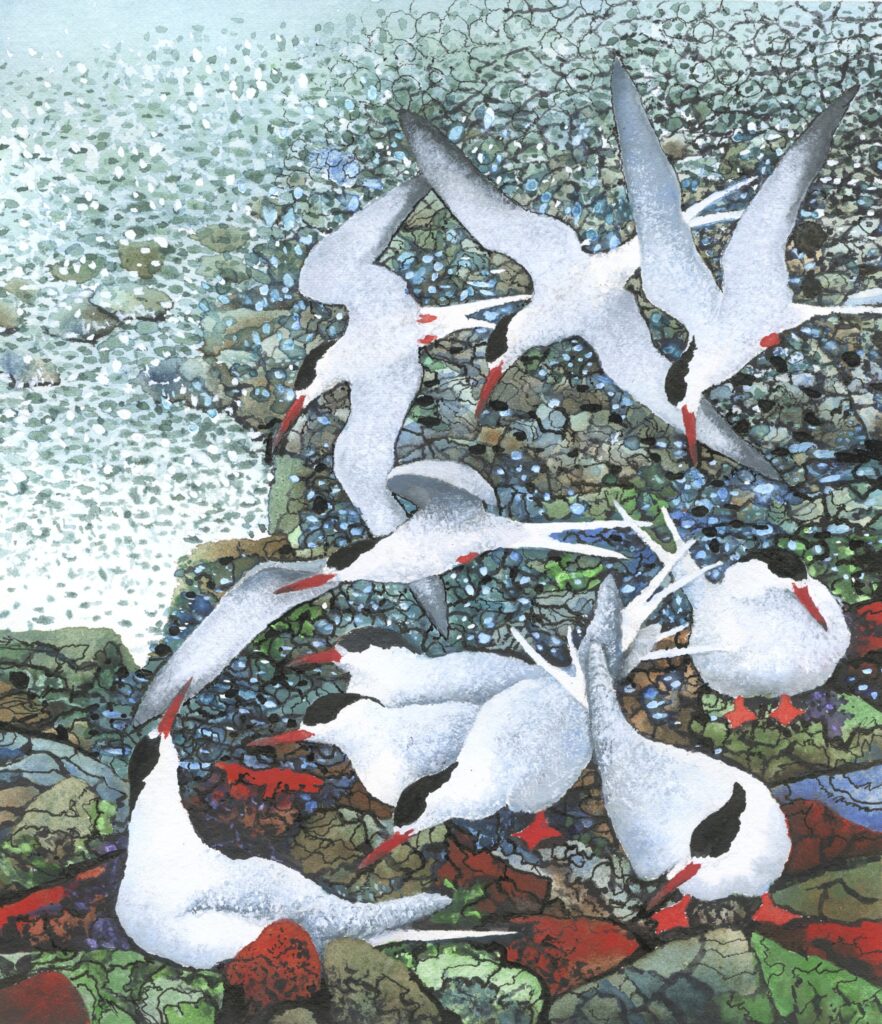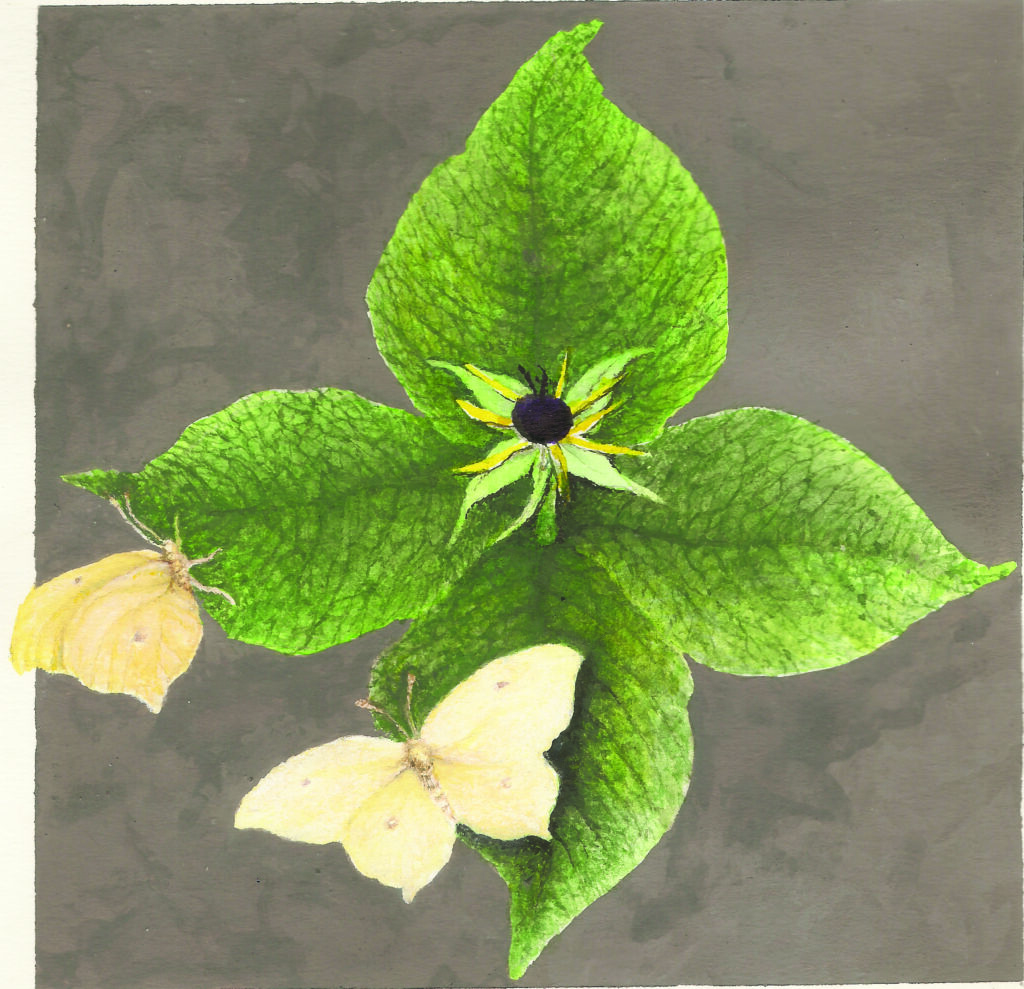Obituary- Alastair Robertson

My brother Alastair Robertson, who has died aged 75 of cancer, combined a passion for wildlife with a compulsion to draw. When in later life he lost the use of his right hand in an accident, he transferred his skills to his left. His developed his natural history expertise in practical ways, fishing for bats from his bedroom window, sugaring for moths with his own treacle mixture, feeding up and pupating caterpillars so that they revealed themselves, once as a Purple Emperor moth.
Home was a suburban version of My Family and Other Animals, with green lizards in a vivarium, a succession of ferrets stinking out a garden shed and a Harris Hawk called Doris in the downstairs loo. His bedroom was filled with cartoons, pen-and-ink sketches and scraperboards mainly depicting birds and animals, although the occasional human fell prey to his sense of humour.
Childhood holidays in Pembrokeshire began when Alastair was four. Every year we stayed in a cottage in the middle of Dowrog Common, which provided natural attractions, eels and adders and the like, much greater than those of the beach. In adolescence his interests became centred on his pursuit of Peregrine Falcons to watch and sketch. At a time when Peregrines had been decimated by organochlorine pesticides, he managed to locate eyries which were still occupied along the cliffs near St David’s Head.
© Alastair Robertson
Alastair had little appetite for formal education, preferring to immerse himself in books, such as Mervyn Peake’s Gormenghast trilogy and T H White’s The Once and Future King. T H White fed his passion for Falconry and a succession of birds of prey to train and fly. This included Lanner Falcons, Red Headed Merlins and a Gyrfalcon which he flew on a US air force base in Oxfordshire, a rare occasion when he opted for paid work rather than the precarious existence of a freelance artist.
Alastair’s paintings, a soft green cwm in mid Wales with a Red Kite hovering in the foreground, a Woodcock blending into the rust browns of bracken in winter, a Nightjar in a green shade, stay in the memory. His watercolours of wildlife against delicate backgrounds of washes were very much his own style: they were an expression of who he was. His birds were always alive, often exhibiting an aspect of behaviour which he had observed.
He illustrated books such as All the Birds of the Air and Forgotten Fruit and his line drawings augment The Complete Bat and the wildlife journal Natur Cymru – Nature of Wales for which he provided artwork for three covers, including the tenth anniversary edition. His choice of ten terns, one for each year of publication, was typical of the pleasure he took in adding a layer of meaning to his paintings; this graphic illustration is also a nod to the influence of Clifford and Rosemary Ellis under whom he studied at Bath Academy of Art and whose artwork set the standard with the dust-wrapper for E B Ford’s Butterflies (1945), the first volume in the New Naturalist series.
From the early 1980s he lived at Roberts Farm, a National Trust property located under Sharpenhoe Clappers. There he met Anna Gedroyc, an extrovert and bubbly perfect fit and they married in 1985; Anna died in 2021. The menagerie at Roberts Farm included a cat, two Scottish Deerhounds (one after the other) and numerous chickens and bantams. They lived in comfortable chaos and visitors may have thought that he pushed the boundaries of eccentricity to the limit. Actually, he lived as he wanted to, with no interest in what anyone else thought. He was most at home on a Welsh cliff or a Chiltern down observing and sketching wildlife. As a result of these observations, he leaves behind a legacy of much-loved paintings.

© Alastair Robertson
Alastair always followed his own star. After he lost his larynx to cancer, he would type what he wanted to say on a notepad: his messages never failed to surprise me. Avoiding being boring or predictable was something that came naturally. At the end, conscious that he was dying, he typed out a farewell to the effect that the process was enthralling to him if to no one else, and ended with ‘sorry to be selfish’.
A short account of his life and art appears on the Guardian website; it is hoped to establish a website for a selection of his artwork.
James Robertson
Naturalist, writer and regular British Wildlife contributor.
